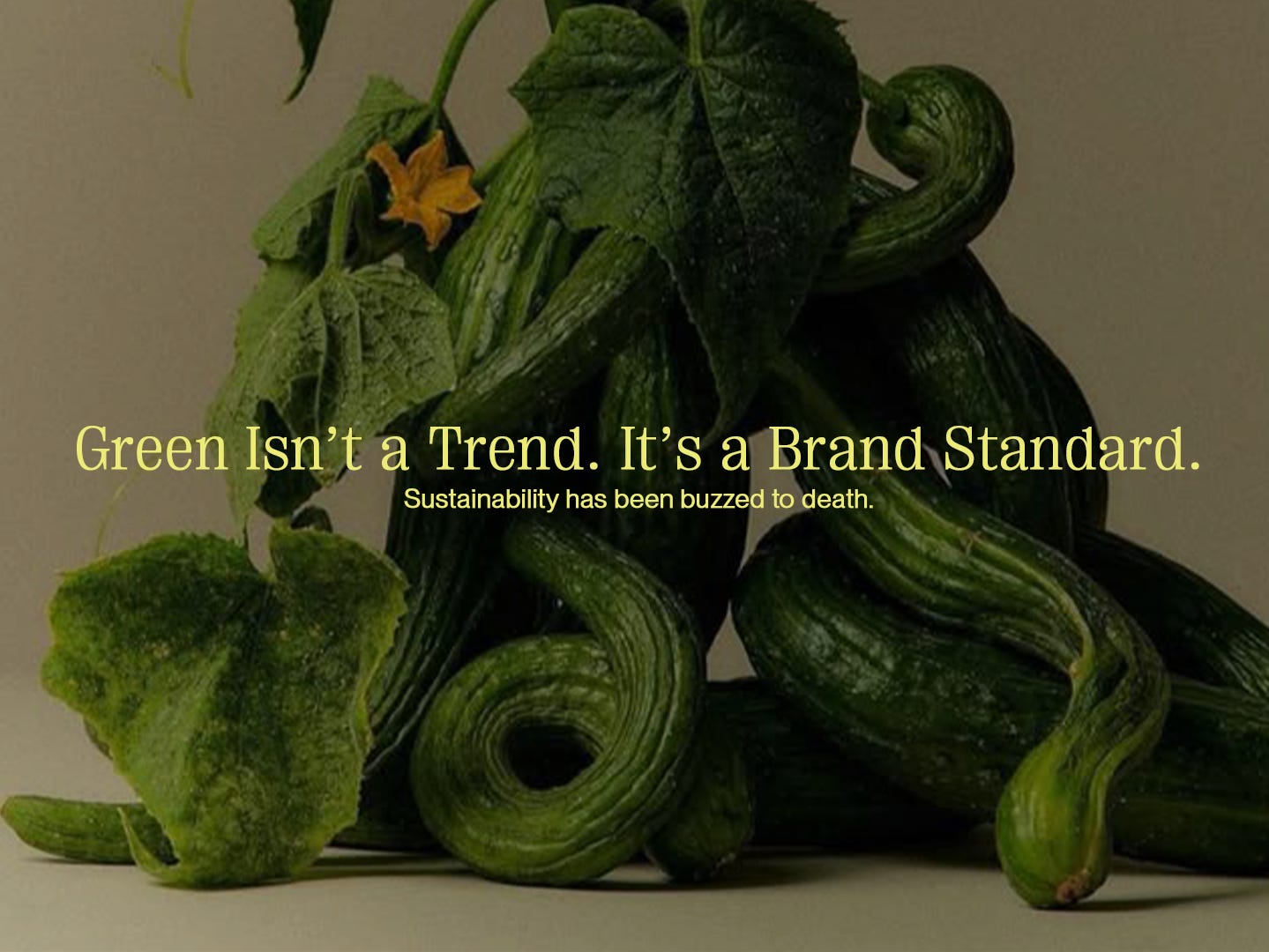Sustainability has become the hospitality world’s favourite buzzword printed on menus, whispered into brand decks, and sprinkled across mission statements like parsley. But let’s be clear: in 2025, sustainability isn’t a marketing trend. It’s the baseline. And if your brand isn’t there yet, you're already playing catch-up.
Consumers today are savvy. They’re not just scanning for flavour; they’re scanning for values. Where was it grown? How was it packaged? Did this dish come with a side of integrity or just a recyclable sticker? In a crowded, copycat market, purpose-led brands are the ones people remember and return to.
But doing sustainability well requires more than a recycled paper menu and a “low food miles” caption. It requires clarity, consistency, and courage.
So, how do you design a hospitality brand that feels as good as it tastes and actually lives up to the values it promotes?
Let’s break it down.
First Principles: What Sustainable Brands Actually Do
A truly sustainable brand isn’t built from slogans or certifications. It’s built from decisions (small ones, daily ones) that reflect a deeper intention. These brands consider the lifecycle of everything they touch, from what gets plated to what gets composted, from what’s sourced to what’s left out.
It starts with ingredients. Choosing local and seasonal produce isn’t just a nod to environmental impact it also makes your food better. The story is richer, the flavours are fuller, and the connection to place becomes tangible. A tomato in July from a farm 20 minutes away isn’t just sustainable it’s a sensory experience.
Then there’s waste. Brands that think about sustainability reimagine waste as part of the creative process. Whether it’s nose-to-tail cooking, reusing trimmings for staff meals, or turning day-old pastries into new desserts, waste becomes another design constraint and an opportunity to innovate.
Packaging is another battleground. A beautifully branded pastry box doesn’t mean much if it lingers in landfill for 400 years. Compostable, biodegradable, and recyclable materials should be the rule, not the exception. And if you’re using premium materials, make sure they’re doing more than looking good.
Most importantly, sustainable brands are transparent. They’re not afraid to show the work in progress the changes being trialed, the supply chain struggles, the ongoing decisions that shape their impact. They don’t pretend to be perfect, but they make it easy for customers to understand what they stand for, and why.
Good Practice Only Becomes Good Branding When You Talk About It Well
Doing the work is essential. But communicating it? That’s where the branding muscle really kicks in. Because no matter how many internal decisions you make, they won’t strengthen your brand if no one understands or feels them.
Start with transparency. Be generous with detail. Instead of vague terms like “eco-friendly,” explain how your ingredients are sourced, what you’re doing with your offcuts, or why you chose one supplier over another. Customers crave specifics not just stories, but substance.
That said, stories matter. Humans don’t remember spreadsheets; they remember the cherry farmer who drops off his harvest at dawn, or the pastry chef who spent three months finding the perfect compostable box. This is the emotional layer that transforms information into connection. It’s not about romanticising it’s about humanising your choices.
Your digital presence is a stage for this. Social media shouldn’t just be a highlight reel it should be a living, breathing behind-the-scenes. Share the process, the pitfalls, the messy bits. Show the team experimenting with new packaging, or a failed test batch that led to something better. When customers see you trying really trying, they root for you. They become part of the journey.
And yes, certifications and labels help, but they’re just one part of the picture. The story around the stamp is just as important as the stamp itself. If you’re going to invest in Fair Trade, organic, B Corp tell people what that means to your business. Why did you pursue it? What changed after you did? Otherwise, it’s just another logo in the footer.
Design Sustainability Into the Brand.
Not Just the Operations.
Here’s the part often missed: sustainability isn’t just operational. It’s emotional. And it’s visual. When done well, it becomes part of your aesthetic and your atmosphere not just a bullet point in your brand values.
This means choosing colours, textures, typography, and tone that reflect a sense of care, balance, and connection to nature. It means designing spaces that feel considered. Packaging that feels light. Messaging that feels honest. If your visuals are all noise and gloss, but your values are rooted in restraint and responsibility, the disconnect will show.
Sustainability isn’t beige. It’s not boring. And it’s definitely not just about being “clean” or “minimal.” It can be rich, textured, expressive as long as the expression is honest.
Progress, Not Perfection
Let’s be real. You’re not going to get it right all the time. There will be compromise, inconsistency, tension between cost and values. But sustainability isn’t about getting it perfect on day one it’s about building a culture that wants to do better every day.
The brands that stand out aren’t the ones who claim perfection. They’re the ones who are brave enough to share the behind-the-scenes, stay accountable, and invite their community into the process.
Every thoughtful decision whether it’s switching your flour supplier or rethinking your cake box becomes a small but mighty brand move. And when those choices are communicated well, they don’t just build trust. They build loyalty.
So the question becomes:
What’s one sustainable decision your brand can commit to this month and how will you share it?
Because in today’s food world, doing good isn’t extra. It’s expected. And how you show up in that space clearly, creatively, consistently is what sets you apart.
À bientôt!
Mary





